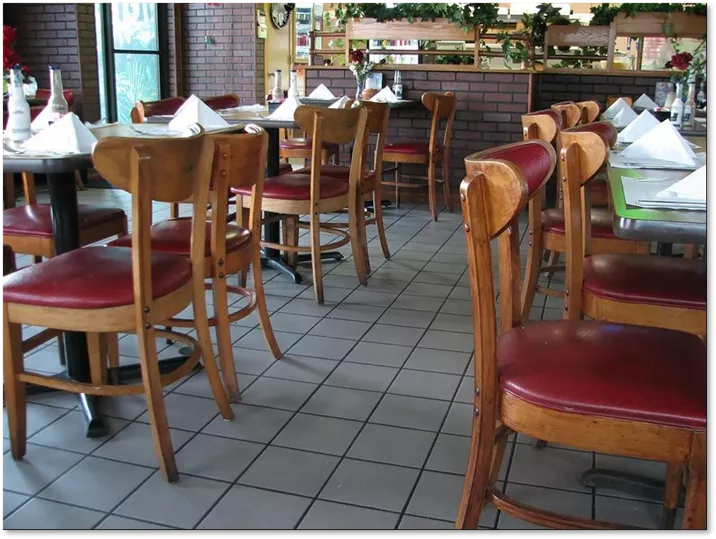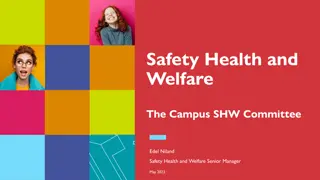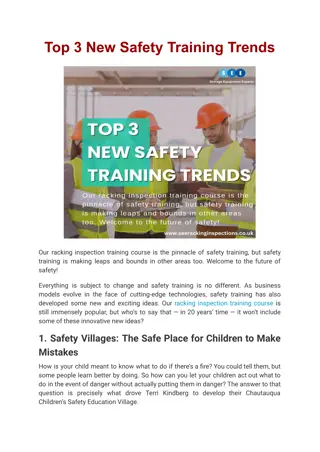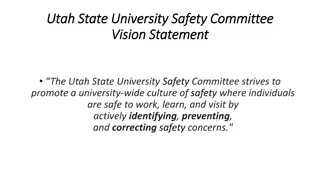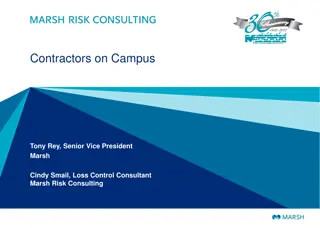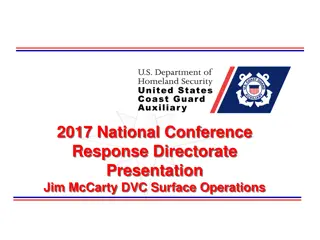Chair Safety Training Presentation
Welcome to the Chair Safety training presentation, where you will learn about the importance of inspecting chairs to prevent injuries and claims. This program emphasizes the benefits of chair inspections, steps to ensuring chair safety, and the inspection process in high-use areas like restaurants. Remember, regular inspections and proper maintenance can help avoid accidents and liabilities associated with faulty chairs. Stay informed and prioritize safety in your organization.
Download Presentation

Please find below an Image/Link to download the presentation.
The content on the website is provided AS IS for your information and personal use only. It may not be sold, licensed, or shared on other websites without obtaining consent from the author.If you encounter any issues during the download, it is possible that the publisher has removed the file from their server.
You are allowed to download the files provided on this website for personal or commercial use, subject to the condition that they are used lawfully. All files are the property of their respective owners.
The content on the website is provided AS IS for your information and personal use only. It may not be sold, licensed, or shared on other websites without obtaining consent from the author.
E N D
Presentation Transcript
Introduction Welcome to this training presentation on Chair Safety. Please use the forward and backward arrows at the bottom left of this page to navigate through the training at your own pace. This presentation includes quiz questions, which will appear after every few slides. You must answer the questions before the training will continue. If you are unsure of the correct answer to any question, you may go backward to reread the information so that you can fully understand the message. Thank you for doing your best to learn this important information.
Disclaimer This training material presents very important, pertinent information. It should not be assumed, however, that this program satisfies every legal requirement of every state. Some states require the training be developed and delivered by an individual with specific training and experience. This training is AWARENESS LEVEL and does not authorize any person to perform work or validate their level of competency; it must be supplemented with operation and process-specific assessments and training, as well as management oversight, to assure that all training is understood and followed. Your organization must do an evaluation of all exposures, applicable codes and regulations and establish proper controls, training and protective measures to effectively control exposures and assure compliance. This program is neither a determination that the conditions and practices of your organization are safe, nor a warranty that reliance upon this program will prevent accidents and losses or satisfy local, state or federal regulations.
Chair Safety The benefits of chair inspections: Falls from defective or collapsing chairs and the resulting claims are commonly overlooked sources of injury and loss. These injuries can be serious, and claims can occur against businesses, restaurants, hotels and other organizations and settings. A simple inspection program can prevent needless injuries and claims.
Chair Safety Steps to assuring chair safety: When purchasing chairs, obtain the manufacturer s inspection recommendations and establish a checklist. Follow the inspection frequency recommendations and design limitations. Assure that chairs are used solely for their intended purpose. For example, do not use a chair as a work stool. All employees must be trained on the chair inspection program, and they must be aware of any potential issues with the chairs, such as cracks in the chair legs. Track and document completed inspections using the Training TrackTMapplication in the Risk Management Center.
Chair Safety Inspection process: In high-use areas such as restaurants, conference centers, etc., inspect all chairs on a daily basis and always before peak service periods. If a chair is defective or suspect in any way, immediately remove it from service. Have the chair either repaired or discarded. Inspect chairs daily that are stored outside in sunlight or near water, such as chairs next to swimming pools and hot tubs.
Chair Safety Chair inspection checklist: Based on manufacturer requirements, establish a chair inspection program. Document all results, and track the frequency for performing these inspections using the Training TrackTM application in the Risk Management Center. According to best practices, the chair inspection should consider the following points: CHAIR INSPECTION QUESTIONS Yes No Corrective Action Do the chairs appear to be in good condition? Are they properly adjusted for their correct use? Are the legs securely fastened? Are the backs and arms securely fastened? If there are welds, are they completely sealed and crack free? Will pivoting the chairs likely pinch fingers? Are chairs wobble-free? Are there any chairs more than two years old? If so, inspect them more frequently and consider budgeting for new ones. Are chairs properly cleaned on a regular basis? Are all fasteners tight and strong? Has there been a manufacturer s recall on the chair?
Chair Safety Welds: If chairs have welds, assure that they are sound, without cracks, rust or voids. Assure that all welds on all sides of the chair are inspected thoroughly.
Chair Safety Base and legs: Inspect the base, legs and other high-stress areas of the chair for signs of wear, cracks and other stresses. Assure that all maintenance , including lubrication, is done to manufacturer specifications.
Summary Inspecting chairs will reduce injuries and claims. Develop an inventory of all chairs, chair uses, manufacturers and support information. Implement a preventive maintenance program. Implement an effective risk mitigation focused program for safety, which includes training employees. Use the Training TrackTM application in the Risk Management Center to assure compliance. An effective chair inspection program will prevent injuries and claims.
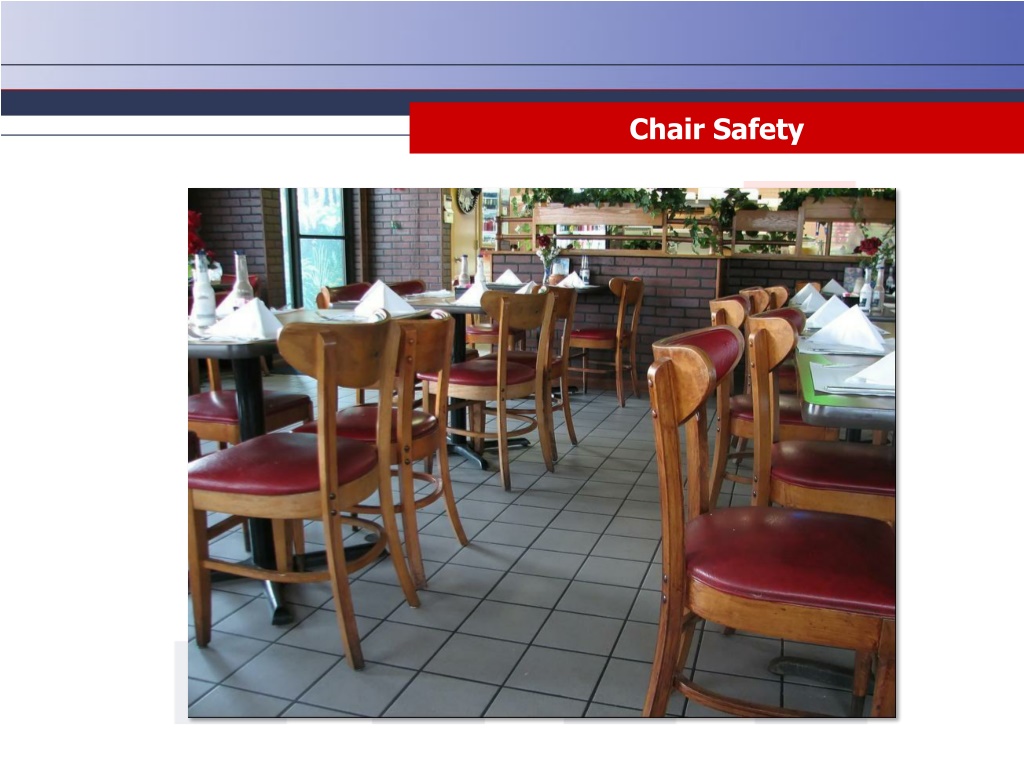
 undefined
undefined


